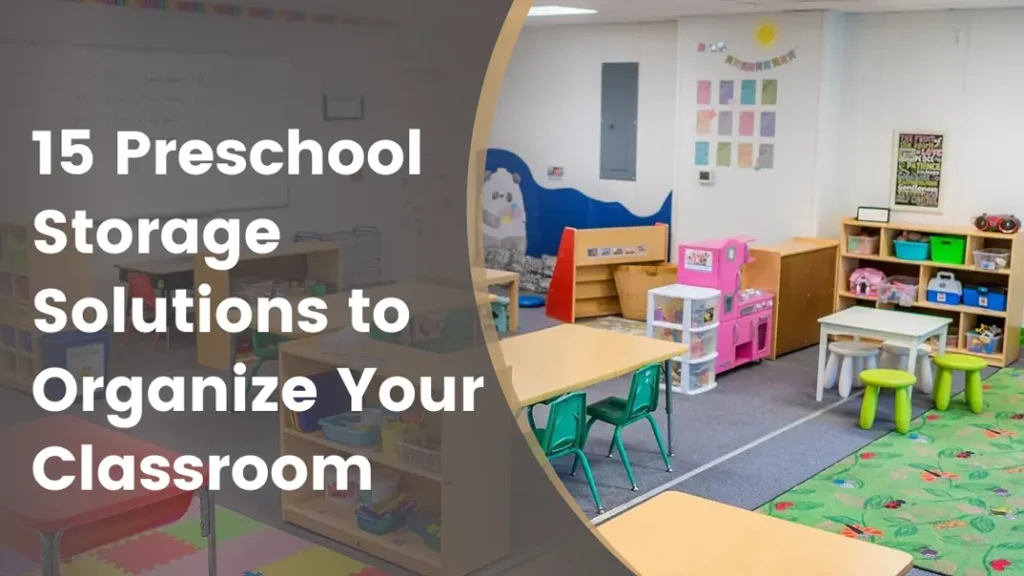Keeping a preschool classroom organized can be a daunting task. With so many toys, books, and supplies, clutter can quickly pile up, leading to distractions and confusion and causing unnecessary stress for the teacher. When your classroom is disorganized, it detracts from the learning environment and the efficiency of your daily life.
Effective preschool storage solutions tailored to your needs are key to an organized classroom. From versatile furniture to creative storage bins, these solutions can help you maximize space, maintain order, and create an inviting learning environment.
Organizing a kindergarten classroom is no small task. As a kindergarten furniture supplier with years of experience, I’ve seen firsthand how efficient storage solutions can make a huge difference in creating a conducive learning environment. What if I told you that the solution to the problem lies in choosing the right storage solution?
Why is Preschool Storage Important?
Organization in a preschool classroom holds immense importance. A well-organized space maximizes available room, allowing students to move freely and access materials easily. This setup fosters engagement and collaboration among children. Effective storage solutions reduce clutter, creating a calm and orderly environment. Teachers benefit from increased efficiency, as they can quickly find necessary materials and spend more time teaching. Preschool Storage Solutions, such as cubbies and bins, ensure every item has its place, promoting a structured and productive learning atmosphere.

Tips for Organizing Your Preschool Storage Area
When organizing your preschool storage area, you need practical solutions. Here are some basic tips to help you simplify storage and make it easier to keep your classroom tidy and functional.
1. Choose the Right Storage Containers
Selecting the right storage containers is the first step toward an organized classroom. Different types of containers serve different purposes. The right containers should be durable, child-friendly, and appropriately sized for the items you need to store. Clear plastic bins are often a good choice because they allow you and your students to see what’s inside without opening them. Bins with lids are excellent for storing items that aren’t used daily, keeping them dust-free and out of the way.
For larger items like stuffed animals or sports equipment, consider using durable plastic bins that can withstand frequent use. Smaller containers are perfect for sorting crayons, beads, or puzzle pieces. Remember, the goal is to make it as easy as possible for you and your students to access and store materials.
2. Create a Designated Space
Creating designated spaces for different activities and materials in your classroom is key to maintaining organization. Start by designing your preschool classroom and assigning specific areas for different activities, such as a reading corner, an art station, and a play area. Once these zones are established, you can design storage solutions that fit the needs of each space.
Creating these designated spaces gives you and your students a clear understanding of where things belong. This makes it easier for students to follow routines and helps them develop a sense of responsibility for maintaining the classroom environment.
3. Store Similar Items Together
Grouping similar items is another effective strategy for classroom organization. Storing items together simplifies the process of finding and putting away materials both for you and your students. This method also makes it easier to see when supplies are running low and need replenishment.
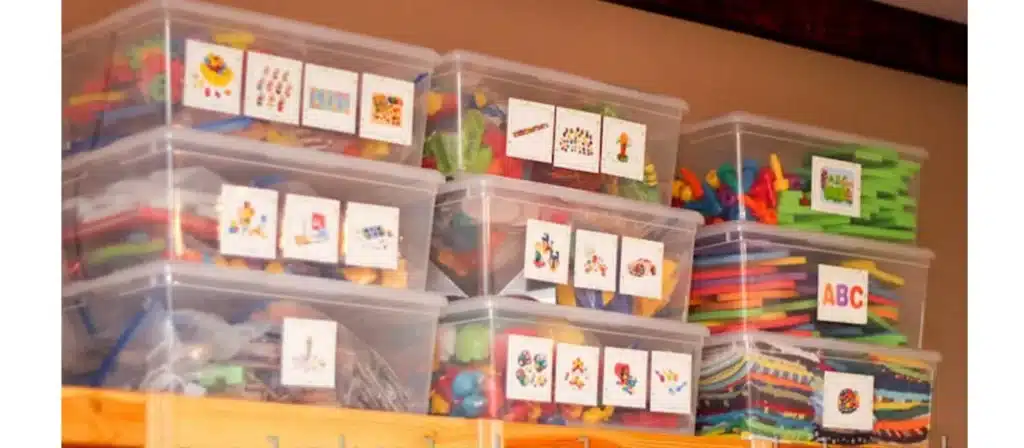
4. Label Items
Labeling is a simple yet powerful tool for maintaining organization in your preschool classroom. When everything is labeled, it’s easier for you and your students to find what you need quickly and put things away correctly. Labels can be used on storage bins, shelves, drawers, and classroom furniture.
You can use pictures, words, or a combination of both to label shelves, bins, and cubbies. Pictures are especially helpful for younger children who may not yet be able to read. The key is to make the labels clear and consistent throughout the classroom.
5. Establish Daily Habits
Establishing daily habits is crucial to maintaining an organized classroom. By incorporating clean-up time into your daily routine, you can ensure that materials are put away properly and that the classroom remains clutter-free.
Encourage children to participate in these routines by assigning specific tasks, such as putting away books or sorting toys. Over time, these habits will become second nature to the children, making it easier to keep the classroom organized.
6. Simplify Materials and Rotation
Too many materials can lead to a cluttered and overwhelming classroom. Simplifying the materials available to students at any given time can reduce clutter and help them focus on the activities at hand. Consider adopting a rotation system, where only a selection of materials is available once, and the rest are stored away for future use.
15 Preschool Storage Solutions
1. Cubbies

Cubbies are small, open storage compartments designed for organizing various classroom items. These units often feature multiple sections that can hold toys, books, and supplies. Wood Cubby Units work well for larger items such as dolls, stuffed animals, and outdoor equipment.
Setting up cubbies involves selecting the right type for your classroom needs. Single-sided cubbies should be placed against walls to save space. Double-sided units can create distinct learning centers within the classroom. Ensure that each child has a designated cubby to store personal items. Label each section with the child’s name to foster a sense of ownership and responsibility.
2. Storage Bins
Storage bins provide numerous benefits for preschool classrooms. These bins help keep materials organized and easily accessible. Clear bins allow children to see what is inside without opening them. Color-coded bins simplify the process of sorting and finding items. Stackable bins save space and keep the classroom tidy. Lidded bins protect contents from dust and spills.
3. Bookshelves
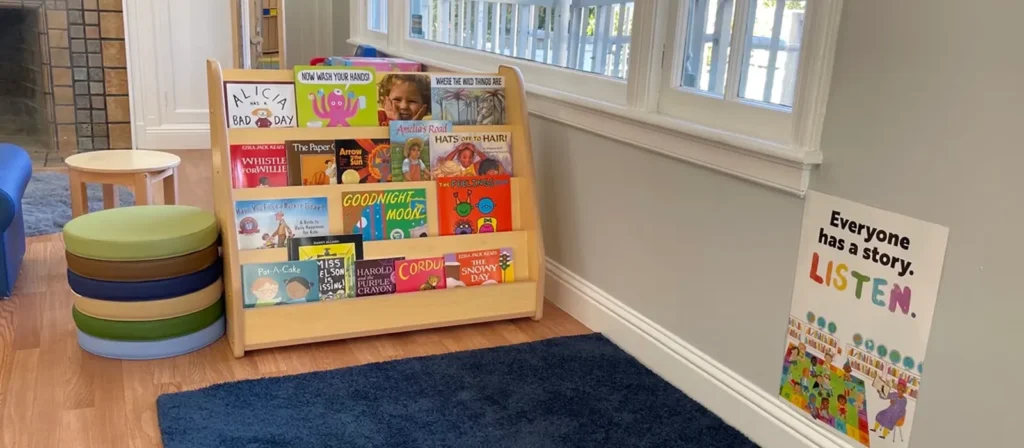
Bookshelves come in various styles to fit different classroom needs. Natural wood bookshelves offer durability and a classic look. Colorful Educational Edge shelves add vibrancy to the learning environment. Open shelving provides easy access but may require bins to keep items organized. Wall-mounted shelves maximize vertical space and keep the floor area clear. Low-standing bookshelves ensure children can reach books independently.
Organizing books by theme or level helps children find what they need quickly. Group books into categories such as animals, fairy tales, or science. Use labels with pictures and words to indicate each category. Arrange books by reading level to match children’s abilities. Rotate books regularly to keep the selection fresh and engaging.
4. Art Supply Organizers
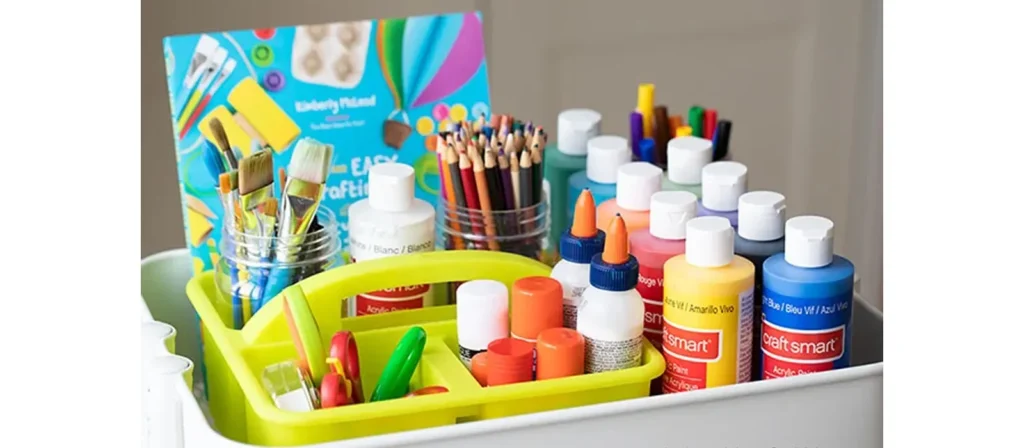
Art supply organizers enhance creativity by providing easy access to materials. Children can quickly find what they need, which encourages spontaneous creativity. Organized supplies reduce clutter, creating a calm and orderly environment. Teachers can spend more time on instruction rather than searching for materials. Neatness in the art area promotes a sense of responsibility among children.
5. Toy Storage Units
Properly stored toys reduce clutter and create a calm environment. Organized toy storage units help children find what they need quickly, promoting independence and responsibility. Teachers spend less time searching for materials and more time engaging with students. A well-organized toy area enhances the overall learning experience.
Teaching children to tidy up fosters responsibility and organization skills. Create a routine for cleaning up at the end of each activity. Use visual cues like labels and pictures to help children identify where each toy belongs. Praise children for putting toys away correctly. Make cleanup time fun by turning it into a game or challenge. Consistent practice helps children develop good habits.
6. Rolling Carts

Rolling carts offer exceptional versatility in preschool classrooms. These mobile units can store various materials, from craft supplies to toys. The Utility Tub Classroom Carts are perfect for science and STEM activities. These carts can hold microscopes and scales while preventing spills.
Rolling carts offer significant mobility and flexibility benefits. Teachers can move these units around the classroom as needed. This mobility allows for easy reconfiguration of the learning space. Rolling carts can be pushed aside when not in use to create more space. Mobile storage units help manage shared supplies between classrooms. Teachers can push cabinets filled with materials to any location and roll them back when finished.
7. Lockers
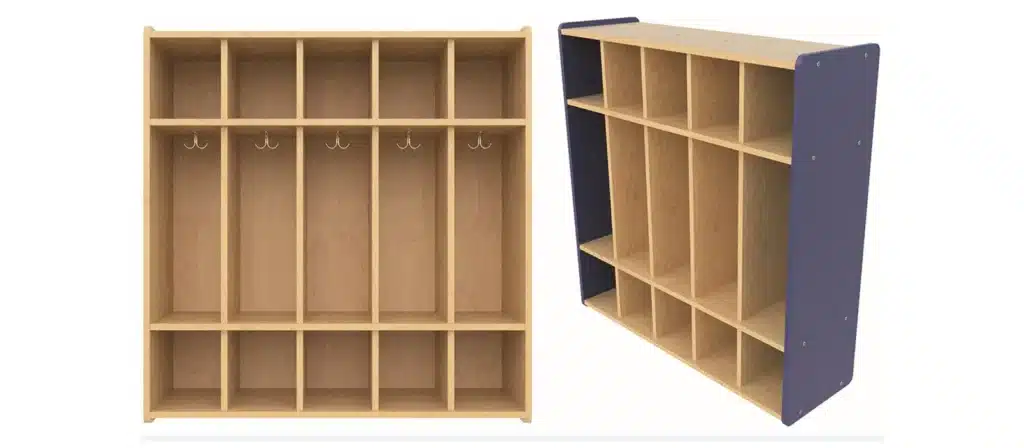
Preschool lockers come in various sizes and styles to suit different classroom needs. Kids’ cubby lockers offer ample room for coats, jackets, and shoes. Double-tier lockers provide additional storage space for backpacks and art projects. Smaller items can be stored in preschool coat locker cubbies. Mobile storage units designed for young learners ensure flexibility and easy access.
Lockers provide a secure place for children to store personal belongings. Each child gets a designated space, promoting a sense of ownership. Secure storage reduces the risk of lost or misplaced items. Personal space in lockers helps children feel responsible for their belongings. This setup fosters independence and organization skills from an early age.
Teaching responsibility starts with showing children how to use lockers properly. Demonstrate how to hang coats and store shoes neatly. Encourage children to place backpacks and art projects in designated areas. Praise children for keeping their lockers tidy. Create a routine for checking lockers at the end of each day. Consistent practice helps children develop good organizational habits.
8. Sensory Table Storage

A sensory table provides a dedicated space for children to explore different textures and materials. These tables often feature bins or compartments filled with sand, water, rice, or beans. Sensory tables encourage hands-on learning and stimulate multiple senses.
Sensory play offers numerous benefits for preschoolers. It enhances fine motor skills as children scoop, pour, and manipulate materials. Sensory activities promote cognitive development by encouraging problem-solving and experimentation. Social skills improve as children share and collaborate during sensory play. Sensory tables also provide a calming effect, helping children regulate their emotions.
Maintaining a clean and safe sensory area requires regular attention. Place a mat under the sensory table to catch spills and make cleanup easier. Use lidded bins to store materials when not in use, keeping them dust-free. Teach children to wash their hands before and after using the sensory table. Regularly inspect materials for wear and tear, replacing them as needed. Ensure that all sensory materials are non-toxic and age-appropriate.
9. Classroom Library Storage
Creating a classroom library involves setting up a dedicated space for books and reading materials and using book carts and library displays to organize the collection. Ensure that shelves are at a height accessible to preschoolers. Incorporate a variety of storage options, including bins and baskets, to accommodate different book sizes and types. Utilize vertical space with wall-mounted shelves. Establish a system for returning books to maintain order.
10. Bulletin Boards

Bulletin boards serve multiple purposes in preschool classrooms. Teachers use them to convey important information and updates. Displaying children’s artwork and projects fosters a sense of pride and accomplishment. Seasonal themes on bulletin boards keep the classroom environment dynamic and engaging. Interactive boards encourage children to participate in activities like matching games or storytelling.
Keeping bulletin boards updated ensures that they remain relevant and engaging. Change displays to reflect current seasons, holidays, or classroom themes. Involve children in creating new content for the boards. Encourage students to contribute drawings, writings, or other projects. Regularly check for outdated materials and replace them with fresh content. Maintain a clean and organized appearance to enhance the overall classroom environment.
11. Coat Racks
Teaching children to use coat racks involves clear instructions and consistent practice. Demonstrate how to hang coats and place hats on hooks. Use visual cues like labels or pictures to guide children. Encourage children to use their assigned hooks to foster a sense of ownership. Praise the children for using the coat racks correctly. Consistent practice helps children develop good habits.
Keeping the coat rack area tidy requires regular maintenance. Assign specific hooks to each child to prevent mix-ups. Use labels with names or pictures to identify each hook. Encourage children to hang their coats neatly and place shoes in designated areas.
12. Drawer Units
Drawer units excel at organizing small items. These units keep materials like art supplies, manipulatives, and stationery neatly stored. Organized drawers reduce clutter and create a calm environment. Easy access to small items enhances classroom efficiency. Drawer units help children develop organizational skills by providing designated spaces for each item.
13. Wall-Mounted Storage Solutions

Utilizing wall space is crucial in a busy classroom. Wall-mounted storage solutions, such as pegboards, shelves, and hooks, offer additional storage without taking up floor space. Pegboards are particularly useful for customizing storage layouts; you can easily rearrange hooks and bins.
Wall-mounted shelves provide a place to store books, toys, or art supplies, keeping them off the floor and within reach of the children. Installing hooks at a child-friendly height can also give them a place to hang their coats or bags, fostering independence and responsibility.
14. Rotating Storage Towers
Rotating storage towers are an innovative solution for organizing a wide range of classroom materials. These towers typically feature multiple levels of shelving that can rotate 360 degrees, allowing children to access items from all sides easily. They are perfect for storing books, art supplies, or small toys.
The compact design of rotating storage towers makes them ideal for classrooms with limited space. They can be placed in corners or other unused room areas, providing ample storage without taking up much floor space. Additionally, the rotation feature adds an element of fun, making it more likely that children will engage with the materials stored there.
15. Under-Bench Storage Solutions
Under-bench storage can be a game-changer if your classroom is short on space. Benches with built-in storage compartments can double as seating areas and storage units, efficiently using every inch of space. These storage compartments can store items that are not frequently used but still need to be accessible, such as seasonal decorations or spare supplies.
Conclusion
Organizing a preschool classroom doesn’t have to be a daunting task. By incorporating these 12 storage solutions, you can create a well-structured, clutter-free environment that enhances learning and makes daily routines smoother. By choosing the right storage options, you can ensure that every item has its place, making your classroom a better place for teaching and learning.
Maintaining an organized classroom fosters a nurturing atmosphere. Parents appreciate the benefits, noting that their children thrive in such environments. A well-organized classroom supports emotional and developmental growth.
Regularly updating and rotating storage items keeps the classroom fresh. Consistent practice ensures that children develop good habits. An organized classroom sets the foundation for a productive learning experience.

